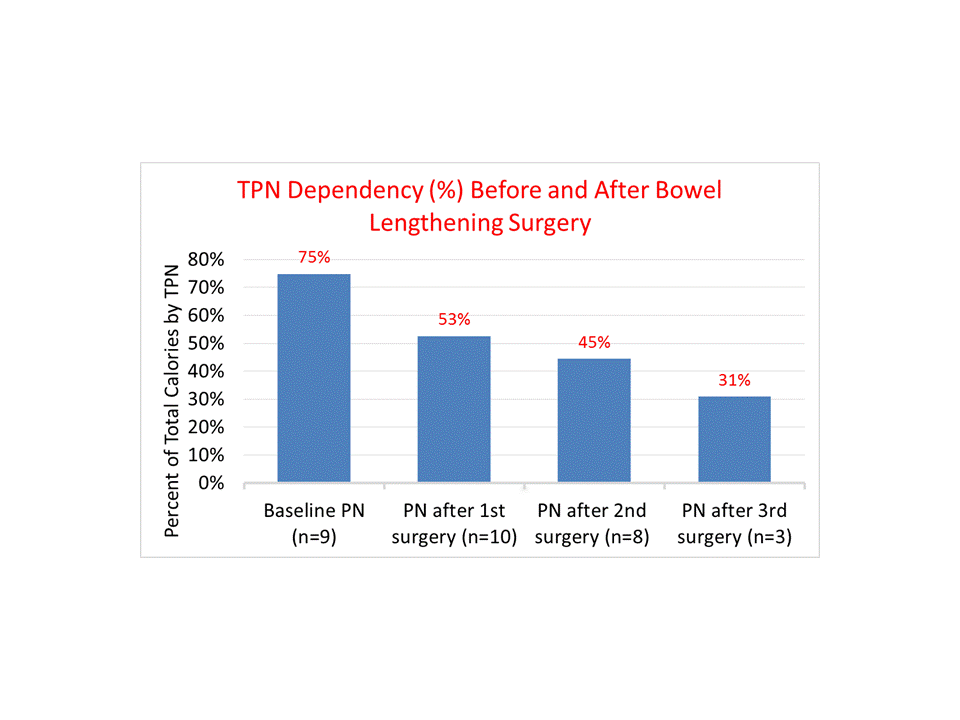
24 USBS patients, who had at least 2 years follow-up over the past 10 years, were included. Outcomes involved death, transplant, time to normalized conjugated bilirubin (CB) and parenteral nutrition (PN) requirement. Platelets, albumin, CB, weight and height Z score were obtained at entrance and end of the study.
At entrance, median age was 3 months, mean bowel length 15 cm; 6 had IC valve, 9 had < ½ of colon. Median PN need was 100%. 21 of 24 had liver disease, 19 had a mean CB of 7.5 mg/dl, (liver biopsy in 13/21 showed fibrosis, stage 3-4 in 8). 18/19 (95%) patients with cholestasis normalized their CB with treatment over a median time of 11 weeks.
Fourteen patients had 23 lengthening procedures (LP) at CNMC with no complications. 12 had the 1st LP at CNMC; 7 Bianchi; 4 STEP and 1 Bianchi & Step. Median age at 1st LP was 21 months. 8 had a 2nd STEP and 3 had a 3rd STEP (1 had 2 prior STEP in other institution). 2/14 patients with LP were transplanted and 3 weaned off PN (one each after the 1st, 2nd and 3rd LP). The mean PN needs decreased in the non-transplant patients from 75% prior to 1st LP to 50% and to 44% after the 2nd STEP. In 3 patients who had 3rd STEP the PN decreased from 68% to 31%.
Of the 24 patients, one is lost to follow up, 7 were considered candidates for a liver- small bowel transplant; 2 declined to be listed (one is now off PN and the 2nd have decreased the PN needs by 35%). Five were listed, 3 were transplanted, one weaned off PN without transplant and one was unlisted, his PN decreased from 100% to 33%. Three patients died (single ventricle, genetic syndrome and post-transplant). Of the remaining 18; 8 (44.4%) weaned off their PN and 10 have decreased their PN needs from a median of 100% to 26%. Laboratory parameters and growth significantly improved. Overall survivability is 87.5% and among those who were not transplanted is 90.5%.
Children with USBS can improve their liver functions and nutritional parameters with the ability to decrease or wean off their PN with careful medical/surgical approach. Intestinal lengthening procedures help them to improve their enteral nutrition. The IRP has enabled these patients to approach school age and have normal growth. Although 87.5% of the cohort has IFALD, 96 % of them resolved their cholestasis. Survivability rate is excellent.
.jpg )